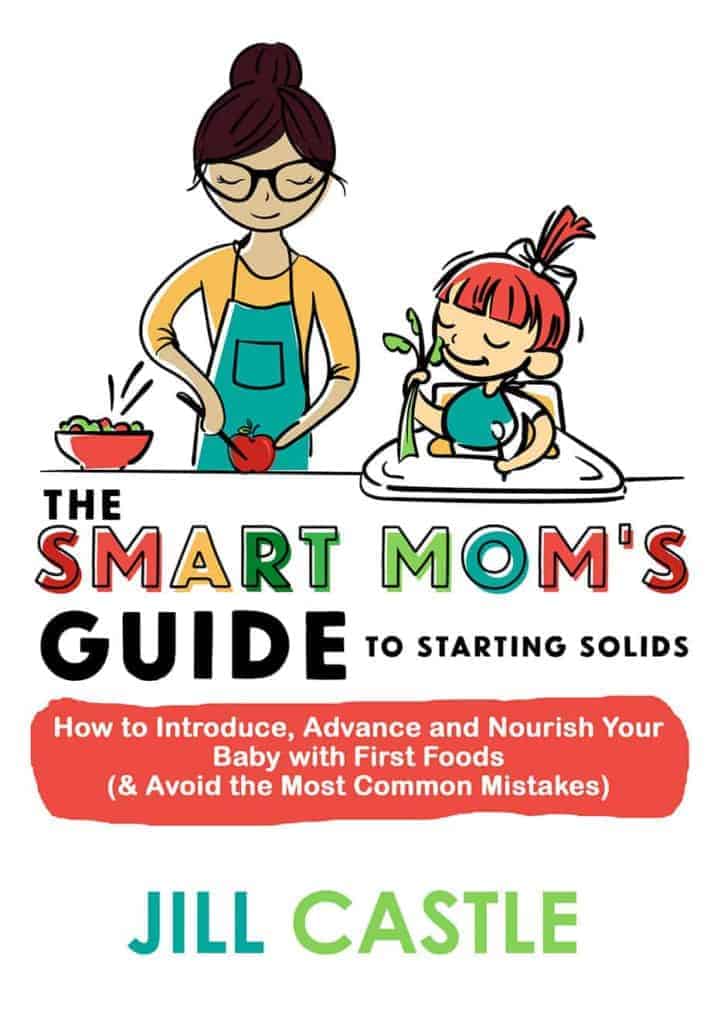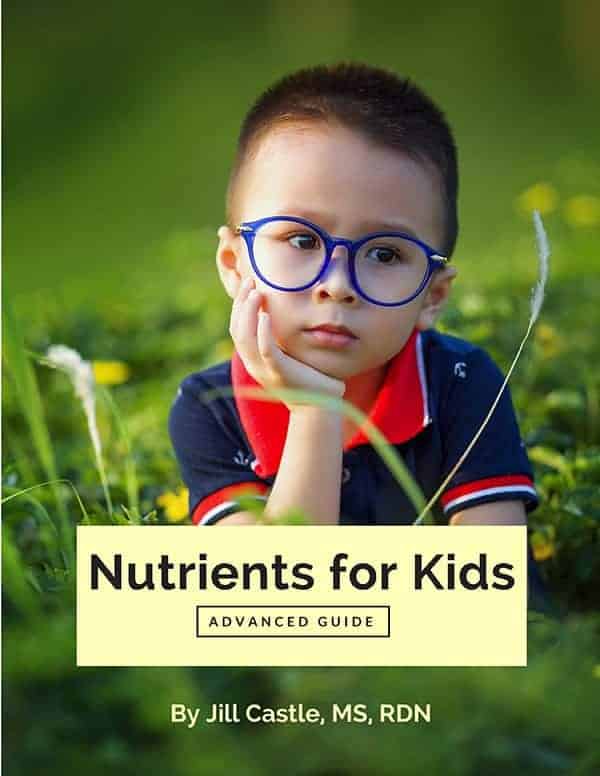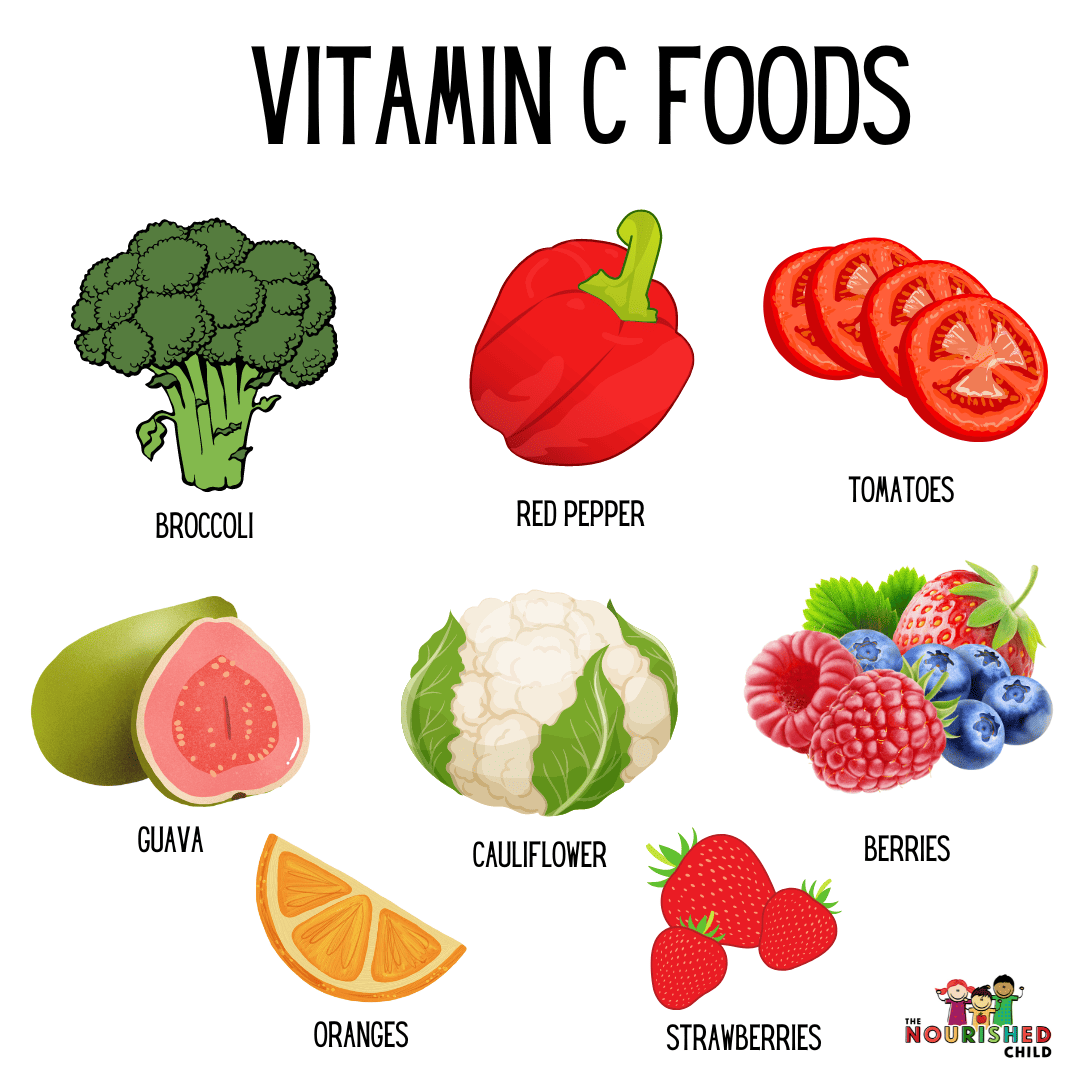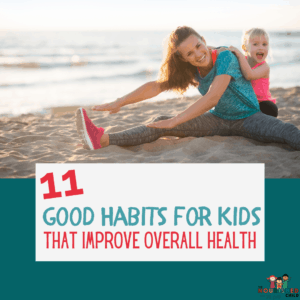All About Vitamin D for Kids
January 28, 2021
Learn about vitamin D for kids, including how much children need, and making sure they’re getting enough from a variety of food sources.
Vitamin D is an essential nutrient for children. It’s critical for bone development and growth, as well as optimal health.
It’s a nutrient that’s supplemented right after birth if a mom is breastfeeding.
And, it’s included in infant formulas.
Natural food sources of vitamin D are few, but food fortification, like in milk, helps children meet their overall requirements.
[Listen to my chat with Dr. Taylor Wallace about the position paper from the National Osteoporosis Foundation in this episode of The Nourished Child.]
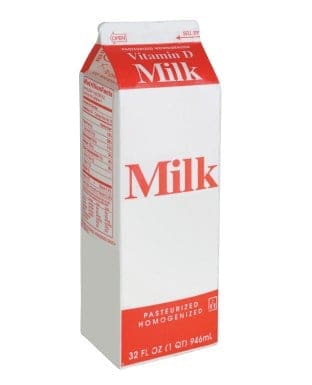
What Does Vitamin D Do?
Vitamin D’s main job is to maintain normal levels of calcium and phosphorus in the blood, which are important for bone growth and overall health.
Vitamin D may also play a role in providing protection from osteoporosis, hypertension (high blood pressure), cancer, and several autoimmune diseases.
How Much Vitamin D for Kids?
Adequate levels of intake for infants are 400 IU/day with a maximum of 1,000 IU/day for infants 0-6 months of age and a maximum of 1,500 IU/day in infants 6-12 months of age.
Breastfed babies will need a Vitamin D supplement, and those who are formula-fed will receive vitamin D included within the formula.
Children and teens 1-20 years of age should get 600 IU of Vitamin D per day.
Vitamin D Deficiency in Children
Rickets, a condition that causes bone malformation, observed in bowing of the legs or knock-knees, occurs with vitamin D deficiency in children.
Over the past decade, rickets is making a comeback, partly due to lack of supplementation in early childhood, poor intake, and the use of sunscreen, which blocks the activation of vitamin D in the skin.
A host of other problems have been linked to Vitamin D deficiency in children, as well.
If you are exclusively breastfeeding your infant, supplementation of Vitamin D is needed due to low levels in breast milk.
If you’re unsure of your child’s nutrient needs and how complementary foods (solid foods for babies who are 6 months or older) help to close the gap on potential deficiencies, my starting solids book will help sort this all out.
Can Kids Get Too Much Vitamin D?
Vitamin D is fat-soluble, and therefore it is stored in the body within fat tissue.
Toxicity is possible, and can lead to serious problems such as dangerously high levels of calcium, lung, heart, and kidney problems.
Intake of vitamin D should not exceed 1,000-4,000 IU per day, depending on the age of the child.
How Do I Know if My Child has a Deficiency?
A blood test can identify vitamin D deficiency.
Infants and children should be screened for deficiency if they have signs of:
- poor growth
- gross motor delays
- are exclusively breastfed
- demonstrate unusual irritability
- have dark pigmented skin (children of color)
- use known Vitamin D lowering medications
- have malabsorption syndromes or inflammatory bowel diseases
- incur frequent fractures
- have low bone mineral density
- are larger in size (overweight or have obesity)
- consume low amounts of vitamin D-rich foods
- have limited sun exposure and/or live in high altitude regions
How Sunshine Helps Kids Get Enough Vitamin D
Vitamin D is often referred to as the “sunshine” vitamin.
About 90% of this nutrient is made by the body when skin is exposed to UVB rays from sunlight.
Experts believe that as little as 10-15 minutes in the sun three times a week is sufficient to meet needs.
The other 10% comes from food, which is made easier when choosing Vitamin D fortified products.
Foods that Provide the Sunshine Vitamin
There aren’t a lot of vitamin D foods.
Oily fish, such as tuna, mackerel, sardines, salmon, and cod liver oil are naturally rich sources of Vitamin D for kids.
Vitamin D-enhanced and fortified foods include eggs, milk, orange juice, and cereal.
You’ll want to be sure that the packaging indicates that vitamin D has been added.
Vitamin D-fortified milk is the main source of vitamin D for Americans.
Shoot for 3 servings of dairy or non-dairy, fortified substitute and a variety of food sources.
The following articles can help you sort through milk and dairy foods:
- Whole Milk: The Lowdown on Full Fat Milk
- Non-Dairy Milk: 5 Surprising Facts You Need to Know
- Is Milk Healthy?
- Is Chocolate Milk Good for Kids?
- Lactose Intolerance in Kids: The Ultimate Guide
All nutrients are important for growing children.
Vitamin D is especially crucial for any growing child.
Whether it’s the sunshine of your active life, or the food from your family table, the benefits are the same.
Getting a mix of both is the best way to ensure your kids are covered.
Yet another reason to eat a good breakfast and spend more time playing outdoors!
Need More Help with Making Sure Your Kid Gets the Nutrients They Need?
Nutrients for Kids will help you get started!
Check out my other booklets, workshops and classes.
They’re designed to make you a better food parent.

